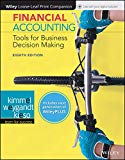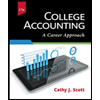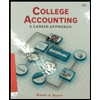
Concept explainers
Accounts receivable
Accounts receivable refers to the amounts to be received within a short period from customers upon the sale of goods and services on account. In other words, accounts receivable are amounts customers owe to the business. Accounts receivable is an asset of a business.
Bad debt expense:
Bad debt expense is an expense account. The amounts of loss incurred from extending credit to the customers are recorded as bad debt expense. In other words, the estimated uncollectible accounts receivable are known as bad debt expense.
Percentage-of-receivables basis:
It is a method of estimating the
Allowance method:
It is a method for accounting bad debt expense, where uncollectible accounts receivables are estimated and recorded at the end of particular period. Under this method, bad debts expenses are estimated and recorded prior to the occurrence of actual bad debt, in compliance with matching principle by using the allowance for doubtful account.
Write-off:
Write-off refers to deduction of a certain amount from accounts receivable, when it becomes uncollectible.
To Prepare: The
To Prepare: The journal entry in the book of Company D as on May 11, 2017.
To Prepare: The journal entry in the book of Company D as on June 12, 2017.
Want to see the full answer?
Check out a sample textbook solution
Chapter 8 Solutions
Financial Accounting: Tools for Business Decision Making, 8e WileyPLUS (next generation) + Loose-leaf
- I need help with this financial accounting problem using proper accounting guidelines.arrow_forwardAnderson Footwear Ltd. produces high-performance hiking boots. Each pair requires $34.80 in variable raw material costs and $24.60 in variable labor expenses. The boots sell for $168 per pair. Last year, the company produced 95,000 pairs. Fixed costs for the year were $1,460,000. Required: a. What were total production costs? b. What is the marginal cost per pair? c. What is the average cost per pair? d. If the company is considering a one-time special order for an additional 6,000 pairs, what is the minimum acceptable total revenue from the order?arrow_forwardWhat Is the amount of the check??arrow_forward
- In step acquisition accounting, what is the previously held interest? (a) Written off to reserves (b) Maintained at original cost (c) Ignored in consolidation (d) Remeasured to fair value MCQarrow_forwardPlease explain the solution to this financial accounting problem using the correct financial principles.arrow_forwardI want answer with all working formatarrow_forward
- Can you help me solve this general accounting question using the correct accounting procedures?arrow_forwardSolve with explanation and accounting questionarrow_forwardVito’s Veggie Rolls prepares 120 rolls every day and sells them at $19 per piece. For each roll, he spends $9.50 on raw materials. Additionally, he spends $1.10 for packing each roll and monthly $60, $20, and $15 for food cart rent, electricity, and other expenses respectively. Lost sales are considered to cost $1.50 per unhappy customer. Leftover rolls can be sold for $5.50 each. On a particular day in July, due to an unexpected strike, Vito was able to sell only 95 rolls. Assume there are 30 days in the month. Determine Vito’s profit for that day.arrow_forward
 College Accounting (Book Only): A Career ApproachAccountingISBN:9781337280570Author:Scott, Cathy J.Publisher:South-Western College Pub
College Accounting (Book Only): A Career ApproachAccountingISBN:9781337280570Author:Scott, Cathy J.Publisher:South-Western College Pub College Accounting (Book Only): A Career ApproachAccountingISBN:9781305084087Author:Cathy J. ScottPublisher:Cengage Learning
College Accounting (Book Only): A Career ApproachAccountingISBN:9781305084087Author:Cathy J. ScottPublisher:Cengage Learning

